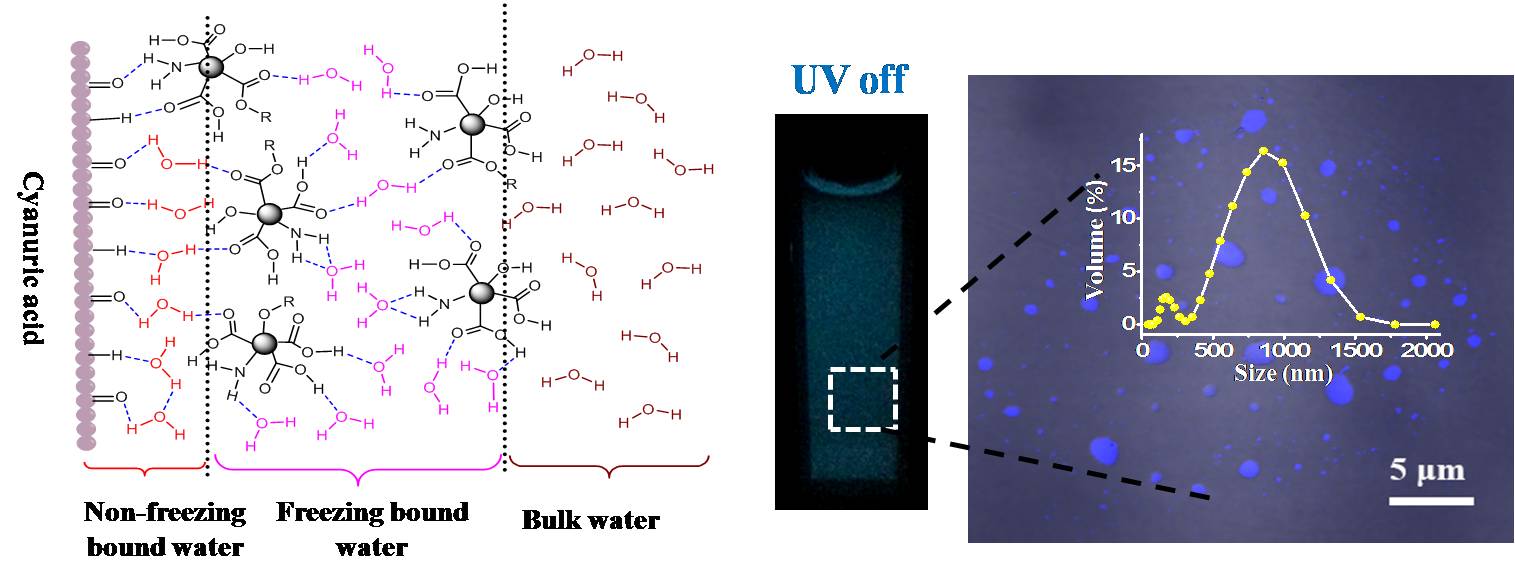Room temperature phosphorescence (RTP) has attracted growing attention because of its long-lived luminescence, large stokes shift and high signal-to-noise ratio, allowing its application in the fields of optoelectronic devicesbioimagingchemical sensors and so forth. The present RTP materials are mainly organometallic and crystalline organic compounds. However, all of these materials suffer from high costs, cytotoxicity and complicated preparation processes, which impede seriously their practical application.
For the above scientific problems and practical application requirements, Zhou Ming's research group first proposeda C=N phosphorescence emission center in 2006, which extends the phosphorescence emission mechanism of CDs.A highly-efficient CD-based materials phosphorescent emission by designing the surface C=N and studying the interaction between CDs and the composite matrix was achived. The materials had an ultralong phosphorescent lifetime of 1.06 s and a high phosphorescent quantum yields of 7%, which are the highest value recorded for the CD-based materials.In addition, the prepared NCD-based RTP materials carrying a dual-emissive property (fluorescence/phosphorescence)was successfully applied in white light emitting diodes (WLEDs) and data security.

Figure 1. Phosphorescent emission mechanism of CDs
Most current RTP materials show phosphorescent features in their anhydroussolid states but phosphorescence quenching usually occursin the presence of water owing to the presence of dissolvedoxygen as well as the occurrence of solvent-assisted relaxation. Water molecules with strong polarity can easily destroy the hydrogen bonding interations between phosphorescent molecules and the matrix, resulting in enhanced non-radiative transitions.Based on these backgrounds, Zhou Ming's research grouppresented a general design strategy that effectively promotes phosphorescence by utilising water molecules to construct hydrogen-bonded networks between carbon dots (CDs) and cyanuric acid (CA). Based on this strategy, phosphorescent emission of CDs was first achieved in aqueous media, and the phosphorescent lifetime was up to 0.67 s. Interestingly, water molecules not only did not cause phosphorescence quenching, but also greatly enhanced phosphorescence emission. Notably, the intensity of phosphorescence in the presence of water was nearly 3 times higher than that of the dry CD-CA powder. In addition, the CD-CA suspension was successfully applied in ion detection based on its visible. The research laid a foundation for the wide application of phosphorescent materials in aqueous solution.

Figure 2. Schematic illustration of the molecular interactions between the CDs, CA particles and water(left); Image of phosphorescent emisson of the CD-CA suspension (right).
This achievement was published online in February 2018 in the internationally renowned journal Nature Communications (Nat. Commun., 2018, 9(1): 734). Full article link: https://www.nature.com/articles/s41467-018-03144-9.


